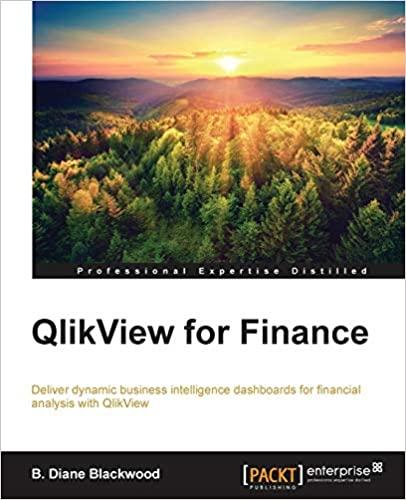Question
Bridgeway Pharmaceuticals manufactures and sells generic over-the-counter medications in plants located throughout the Western Hemisphere. One of its plants is trying to decide whether to
Bridgeway Pharmaceuticals manufactures and sells generic over-the-counter medications in plants located throughout the Western Hemisphere. One of its plants is trying to decide whether to automate a portion of its packaging process by purchasing an automated waste disposal and recycling machine. The proposed investment is $400,000 to purchase the necessary equipment and get it into place. The machine will have a five-year anticipated life and will be depreciated at a rate of $80,000 per year, toward a zero anticipated salvage value. The firm's analysts estimate that the purchase of the new waste-handling system will bring annual cost savings of $40,000 from reduced labor costs, $18,000 per year from reduced waste disposal costs, and $200,000 per year from the sale of reclaimed plastic waste net of selling expenses. Bridgeway requires a 20% return from capital investments and faces a 35% tax rate. a. Using the estimates provided above, should Bridgeway purchase the new automated waste-handling system? b. The manager at the plant where the handling system is being contemplated has raised some questions regarding the potential savings from the system. He asked the financial analyst in charge of preparing the proposal to evaluate the impact of variations in the price of plastic waste materials, which have proven to be volatile in the past. Specifically, what would be the impact of price reductions for the waste that drive the revenues from the sale of waste down to half their estimated amounts in Years 1 through 5? c. (Simulation problem) Model the new investment, whose value is determined by the following random variables: Annual revenues from reclaimed waste in Year 1 follow a triangular distribution with a minimum value of $100,000, a most likely value of $200,000, and a maximum value of $300,000. In Year 2 (and each year thereafter), the distribution is still triangular; however, the most likely value is now equal to the value observed in the previous year. The minimum value is equal to 50% of the observed value in the previous year, and the maximum is equal to 150% of the observed value in the previous year. The revenues from reclaimed waste exhibit a correlation coefficient from year to year of .90. Labor cost savings can be forecast with a high degree of certainty, because they represent the savings from one hourly worker that will no longer be needed once the new waste-handling system has been put into place. The reductions in waste disposal costs come from a uniform distribution, with minimum value of $15,000 and maximum value of $21,000.The waste disposal costs are assumed to be uncorrelated over time
1. What is the probability of a cash flow less than $150,000 in Year 1? In Year 5? (Hint: Define the annual Project FCFs for Years 1 through 5 as forecast variables. You will use only the Years 1 and 5 cash flow distributions for this question but will use all of them to answer part 3.) 2. What are the expected NPV and IRR for the project? 3. What are the means and standard deviations of the simulated distribution of cash flows for Years 1 through 5? What is the effect of the positive correlation in the underlying determinants of the project's cash flows? (Hint: Look at the standard deviations in annual cash flows through time.)
Step by Step Solution
There are 3 Steps involved in it
Step: 1

Get Instant Access to Expert-Tailored Solutions
See step-by-step solutions with expert insights and AI powered tools for academic success
Step: 2

Step: 3

Ace Your Homework with AI
Get the answers you need in no time with our AI-driven, step-by-step assistance
Get Started


